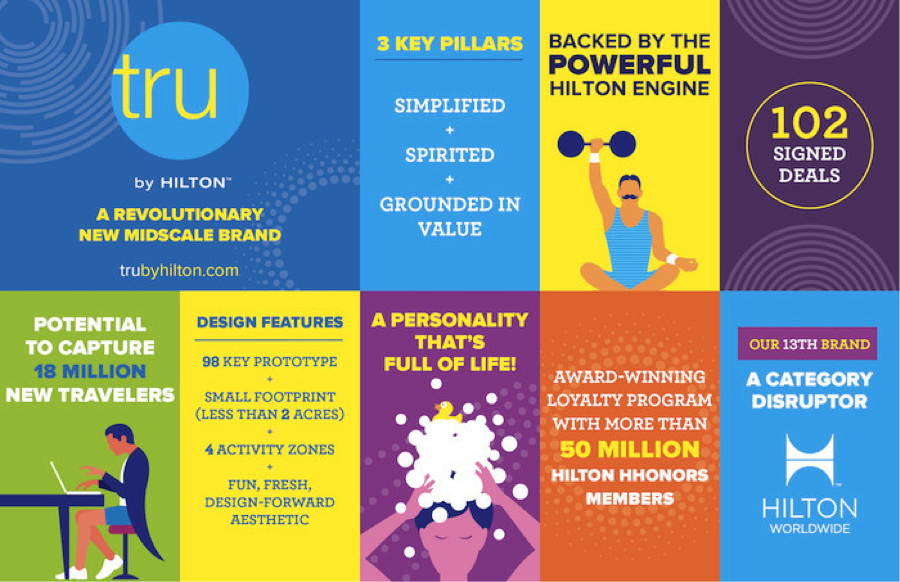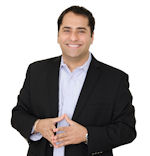
By Vikram Singh
Almost every other week, there is an article about how hotels are trying to “embrace” the Millennial traveler. Basically, anyone born from the 1980s to the early 2000s is in this group. It’s everyone’s new favorite generation to talk about in the hospitality and travel marketing realm. But are they really that different from the rest of us? Do they “Tru-ly” need their own brands?
The Brand Approach
All the big brands seem to be in a rush to get the Millennials’ dollars and build loyalty with them. Their solution so far has been large-scale branding. For a large hotel company, the biggest reason to launch a new brand is to create a new concept for more investors and owners to invest in. That is the prime objective. Besides, you know that there are only so many similar Hilton/Wyndham/Marriott-owned brands that can exist in the same city. A new brand is so much easier to sell to owners and investors because you will be the ‘first’. But is this really the best approach from a marketing standpoint?
Smaller independent hoteliers are having much better luck with Millennials. Why is this happening? Well, where do I start… Oh yes, let’s start with the concept of having a Hotel Brand. In the old Mad Men days of building a brand, there were concepts, meetings, Scotch, and then after-work drinks. Et voila! A brand was born, and everyone involved made a lot of money. Ah, the days before social media and alcohol-free workplaces. Constant connectivity, sharing, and reviews now let the customers (old and new) decide what you are, instead of relying the drawing board you made up in a Madison Avenue office.
Creating a large brand is not the best way to get attention from people who cherish small-scale uniqueness and value over gimmicks. Let’s see how this plays out in Hilton’s latest branding effort.
Tru Video Breakdown
Hilton recently overcame superstition and launched its 13th brand, called Tru. I see what they did there…took out the E in True. #innovation
Here’s what I learned from their marketing materials. Apparently, the new travelers like to work on a laptop in their tuxedo jackets and boxer shorts:
Now I present to you… the brand essence video.
In case you don’t have the time or patience to watch the whole video, here’s a quick recap:
Bam Bam Bam, Wow Wow Wow. Fun Fab Fit. Now Now Now Now, Yum, Mmm.
OMG. Is all I could come up with when I was done watching it. You can decide for yourself.
This new brand is targeting those with a “Millennial mindset” who want (and I quote): “a brand that is simplified, spirited and grounded in value, filling a massive void in the midscale category in the U.S. and Canada. Built from a belief that being cost-conscious and having a great stay don’t have to be mutually exclusive, Tru by Hilton offers an experience unlike anything in its space, consistently delivered in a surprisingly affordable way.”
According to Hilton, no brand is meeting the Millennial’s needs at the midscale price point. Which is really odd, because there are so many midscale independents out there providing a very good price/location/service value.
Just looking at their top three big chain competitors, here are several examples of Millennial-themed midscale hotels:
1. Hyatt: Hyatt Place
2. Starwood: Element and Aloft
3. Marriott: Moxy, Courtyard Residence (And, by the way, have you seen how much fun people staying @ Marriott Residence are having according to this TV spot: Take Over the Town at Residence Inn?)
Tru Features Breakdown
These are the “innovative features” Tru by Hilton offers the traveling Millennial (in their own words):
1. No Desk in the Room
2. The Hive – A first floor experience that’s more than a lobby – 2,770 square feet of open space with unique ways for guests to engage with others or spend time alone, in one of four distinct zones for lounging, working, eating or playing. (Obviously, nobody on the marketing team saw the Resident Evil movie or played the video game before selecting this name.)
3. The Play Zone – Filled with table games, a large-screen TV (featuring DIRECTV), and tiered, stadium-inspired seating.
4. Command Center – A re-envisioned front desk – featuring a social media wall with real-time content to foster engagement among guests, and a 24/7 market offering fun snacks and refreshments, single-serve wine and beer, healthy light meal options, and sundries for purchase.
5. Complimentary Breakfast – “Build Your Own” breakfast consisting of a toppings bar with 30 sweet and savory items allowing guests to customize bagels, donuts, Greek yogurt, and oatmeal to satisfy their taste buds and cravings.
6. Rooms – Smart and efficiently designed guest rooms full of the things that matter most – all-white comfortable platform beds, 55″ TVs, eight-foot wide windows, access to power everywhere, and surprisingly spacious bathrooms.
7. Fitness Center – Defines wellness trends, rather than follows them, with a concept focused on cardio, strength and flexibility. (Say what?)
8. Free WiFi & Mobile Key – (good)
9. Free DIRECTV – (good)
10.Cleaning – Rooms and linens cleaned with P&G Professional™ products (NYSE: PG), including Tide® Professional™, Swiffer® Professional™ and Febreze® Professional™ to help enhance the guest experience and drive operational efficiencies. (Hmmmm, ok?)
True Features Breakdown
1. No Desk ≠ Automatically Millennial Cool. Somewhere it got established that not having a desk makes a hotel room Millennial-friendly. But people have been using desks for activities other than just working for quite some time now and that is not going to change. Also, the Tru infographic clearly has the tuxedo guy working on his laptop; so is he working in his boxer shorts somewhere outside the room?
2. There is such a thing as a Free Breakfast. Their direct competitors like Aloft, Hyatt Place, etc, offer this already. Unless there is a regional/local twist, it really does not help you stand out.
3. No More Three-Letter Words. Bam. Fun. Fab. Fit. Now Now Yum. Littered all over the hotel lobby carpet. How about NOT. Educated Millennials have a decent vocabulary. Just because they use bae, woke and lit does not mean they are going to be impressed with your three-letter words. This may have worked in focus groups on which hundreds of thousands of dollars were spent. But to me it feels a little over the top.
Conclusion
It was time for Hilton to come with something to put up against the other brands in the midscale category. However, their hyper-Millennial(ized) marketing is more than a little phony; it will not resonate with a generation seeking uniqueness and local experiences. The essence video is a bit embarrassing for me to watch, and I’m sure I’m not alone. Millennials don’t want to feel like they’re a cheesy subset of society. They chase value as much as any other demographic would. Tru(e) dat. (Thud. Drop mike.)



